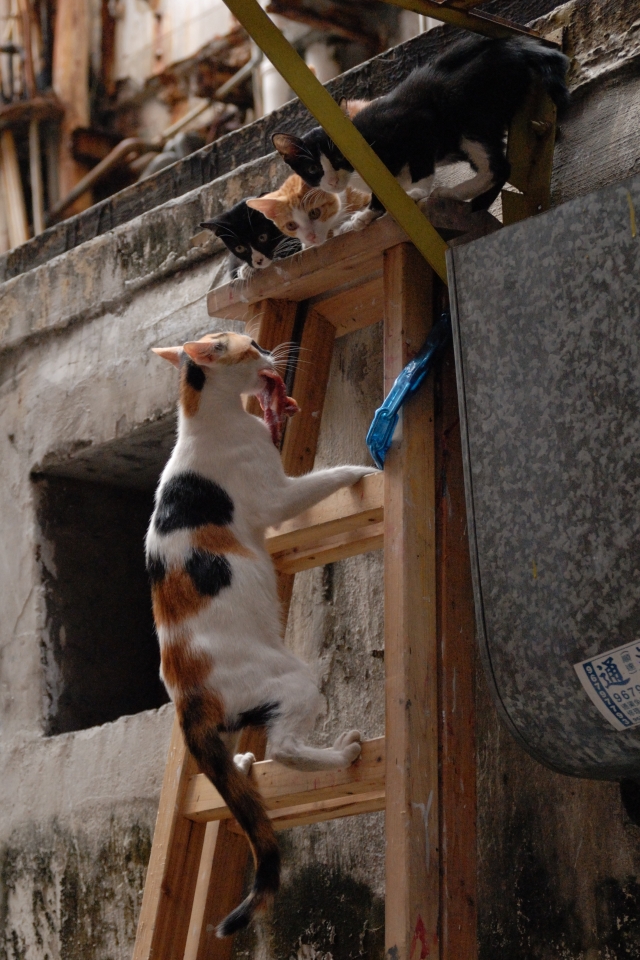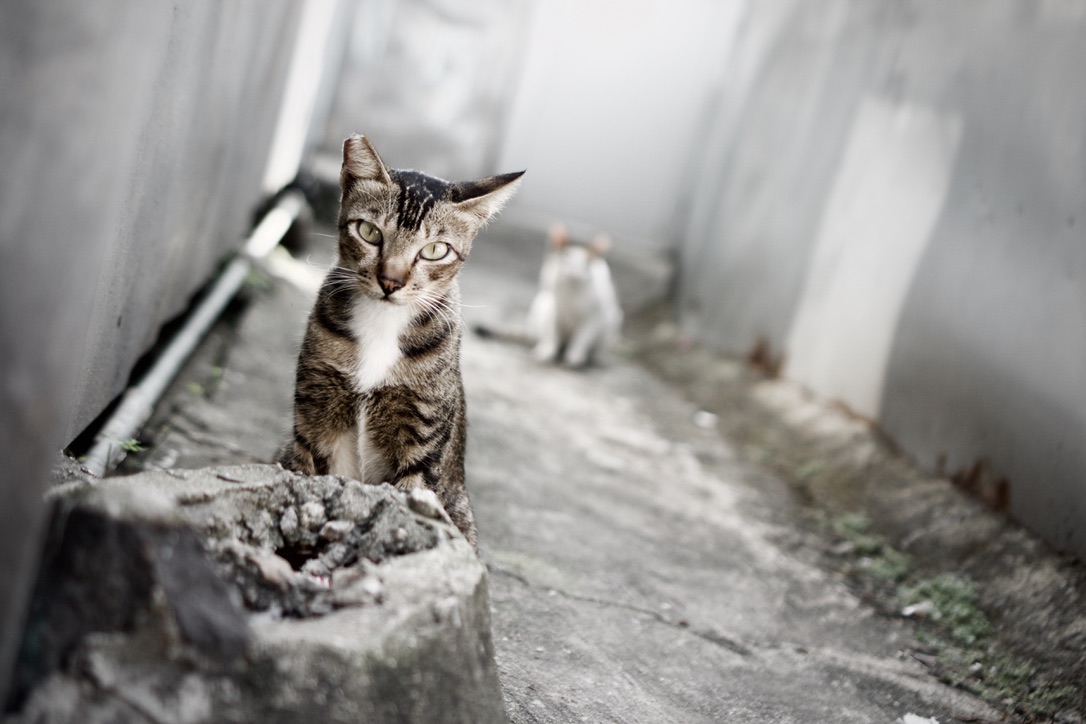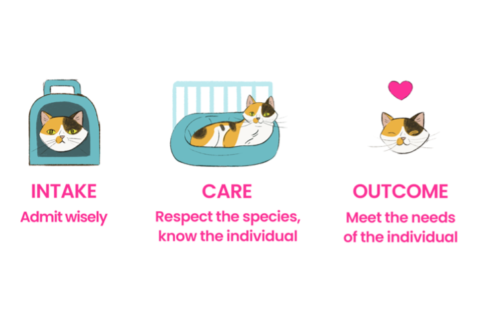iCatcare is a board member of the Alliance for Contraception in Dogs and Cats (ACC&D), a non-profit whose mission is to expedite the successful introduction of methods to non-surgically sterilize dogs and cats and promote their global accessibility.
As our Spotlight on Science feature, we want to share with you some exciting news about a non-surgical sterilant in development for cats and dogs, with this extract from a recent update from ACC&D on progress.
News about a non-surgical sterilant in development for cats and dogs
We are excited to share promising news from our friends at Michelson Found Animals and the Michelson Prize & Grants Program. Sponsored research of a single-dose sterilant for female cats has just completed a second-year breeding study, and results are extremely promising!
The area of science used to accomplish this is called “gene transfer,” and we believe that this progress could represent the onset of lifetime sterility in these cats while also preventing estrus and related behaviors.
Evaluating whether a gene transfer treatment results in permanent sterility requires patience and a multi-year breeding trial. Even so, due to the success thus far, Michelson Found Animals is shifting from a grant-based research project to a drug development phase. In addition to continuing the study in queens, planned next steps include studying this in female dogs. It is not anticipated that this particular technology will work in males.
This is one of the biggest leaps in progress we’ve seen at ACC&D. Although a potential non- surgical sterilant is still several years away, this is a huge accomplishment that brings us one step closer to a viable product.

Frequently Asked Questions
What exactly is Gene Transfer?
In a gene transfer approach, a gene (DNA in the form of a plasmid) is introduced into cells. For the feline sterilant that has shown such promise, this is done with a one-time intramuscular (IM) injection of an engineered viral vector, which carries the DNA to the cells of various organs such as the liver and muscle. The gene does not get integrated into the cell’s DNA. Instead, it sits within the cell and expresses the new gene’s messenger RNA, which is then translated into a protein; this protein is continuously produced over the life of that cell. Depending on the gene delivered, a variety of proteins may be expressed that can suppress animal reproduction, thus resulting in long-term or lifetime sterility. The large number of genes involved in reproduction provides many possible targets. You can learn more about gene transfer on ACC&D’s website.
How do you know that a gene delivery approach to sterilization is safe and humane?
Various gene transfer or delivery methods will operate differently. Each individual treatment will require an assessment of the risks versus the benefits. The most common method of delivering a gene into humans is using a viral vector that has been engineered for that purpose. There are two products using this approach that have been approved by the U.S. Food and Drug Administration (FDA) for treatment of human genetic disease. A similar viral vector was used in the research showing promise for cat sterilization. These viral vectors deliver the gene but do not replicate, nor does the DNA integrate into the cell’s DNA, which reduces the likelihood of safety issues.
The method that Michelson Found Animals is advancing is anticipated to be safe. The pilot studies in cats involved a one-time injection into the thigh muscle. Between the two pilot studies, nine cats have been treated with a viral vector expressing feline MIS without adverse events The injection sites showed no reaction to the treatment. The true safety profile will not be known until studies with much larger numbers of cats are completed, but these preliminary data are encouraging.
Michelson Found Animals is an animal welfare organization, like ACC&D. A high standard for animal welfare is a prerequisite for the studies it funds through the Michelson Prize & Grants Program. Cats in this particular study live communally in an enriched environment, and monitoring of the cats is minimally invasive. For example, hormone levels are measured in feces to avoid having to collect blood samples. The team uses this method while the cats live communally by adding food coloring to each cat’s food and then matching the colored feces to a particular cat!
Does having new DNA fundamentally change the animal?
The DNA delivered by the viral vector does not insert into the cat’s chromosomal DNA in any cell. It sits as a small circular piece of DNA in the cell. When the cell dies, or when the cell divides, it is either degraded or the small circular pieces of DNA are passed on to the new cells, respectively. The animal’s normal DNA is unchanged.

Has this approach ever been used before?
Viral vectors delivering DNA have been used since the 1990s to develop treatments for genetic disease in humans. The promising technology for sterilizing cats uses an adeno-associated virus (AAV), which has some prior successes. In dogs that were born with hemophilia due to a lack of clotting factor IX, an AAV vector was used to deliver the missing gene, and those dogs developed normal blood clotting ability for up to 13 years following treatment. In addition, there are two human therapies for the treatment of congenital gene defect diseases that have been approved by the FDA (Luxturna for retinal disease and Zolgensma for spinal muscular atrophy), both of which use AAV vectors to deliver the missing genes.
The particular approach of delivering a Mullerian Inhibiting Substance (MIS) gene using a virus vector to inactivate the primordial follicles necessary for female reproduction has not previously been used to suppress fertility.
How much will this cost?
The short answer is: we don’t yet know. Michelson Found Animals, which is essential to supporting the technology and shepherding it through the regulatory approval process, is committed to making it an affordable alternative to spay and neuter surgery.
When will this be available?
Again, the short answer: we do not know, as the project is in the early stages, and there is much work to be done to achieve regulatory approval. In the United States, the technology will undergo evaluation by the U.S. Food & Drug Administration Center for Veterinary Medicine. Regulatory approval includes developing manufacturing procedures to assure reliability of the product, in-depth safety studies, and clinical studies in hundreds of cats to prove effectiveness. Completing these studies and submitting to the FDA for review and approval generally takes six to eight years. Even though this timeline is long, we are excited by the very positive results to date. They are a huge accomplishment and bring us one step closer to a viable product.
To learn more about the work of ACC&D, visit http://www.acc-d.org or find them on Facebook.






